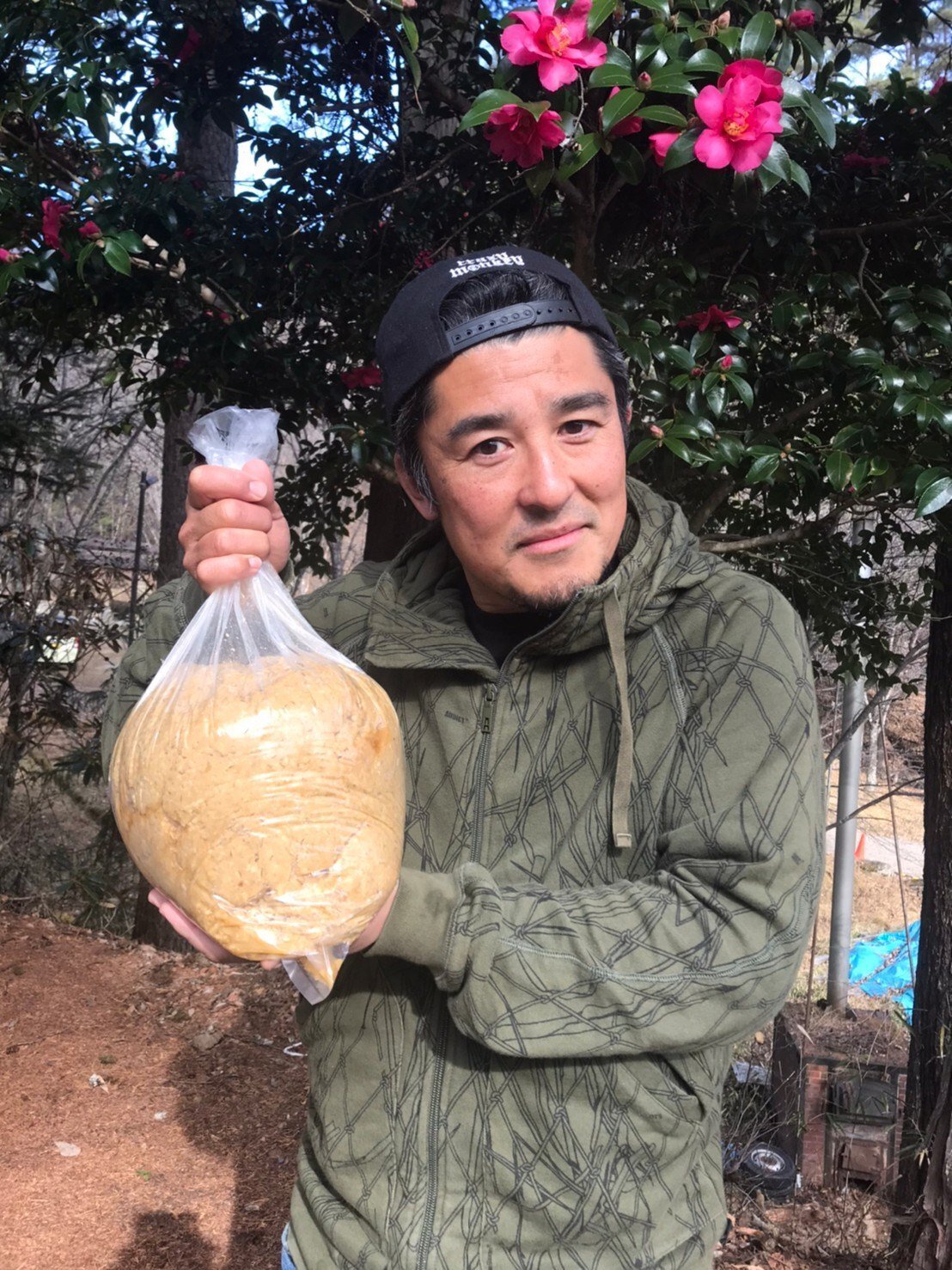
This year, we took part in the Kurobera The taste of miso made by everyone, young and old.
※12.16の作文をDeepLで翻訳しました。
Before you know it, December will be around the corner. It's going by so fast. In the middle of the year, we went to our family's annual event, miso making. This time I'll send you a report on that.
This year, too, Shih-Shun has arrived. Our family's annual year-end events include cleaning, making New Year's cards and making miso.
The Mount Pia Kurobera This year was the fifth time I participated in the event, having had a chance to meet Mr Fujiwara, the manager of the campsite. Many of the participants are locals, but those of us from Tokyo are also kindly accepted.

9am. The meeting starts under a warmer-than-usual blue sky. A drum full of steam is filled with beans. For a start, these are boiled to soften them and then put through a mincer in the same way as minced meat.

Add salt to the paste-like beans and mix further. This is done with bare hands, which is also hot. The workers manage to work with an uchiwa (Japanese fan).
Next comes the koji. Koji will die if the temperature is above 40 degrees Celsius, so it is added roughly after the temperature reaches the level of human skin.

Mixing is basically done with bare hands. People have indigenous bacteria in their hands, and mixing by hand is said to make a tasty miso. It is also said to boost immunity.
After mixing, before washing my hands, I tasted a bit of miso (something before it becomes miso)... it was really salty. Is this going to turn into that deep-flavoured miso? I wonder every time.
When the beans, salt and koji are sufficiently mixed, they are transferred to another container, but in order to remove air bubbles, they are put into small balls. This is because if air bubbles remain after the brewing process is finished, mould can develop from them. Both adults and children enjoy throwing them in.

Today's process is completed when the heavy container is carried into the warehouse by three people. This is the end of our part of the process, but after this, the local people carry out various other tasks, such as turning the miso back to the earth (a process in which the miso is exposed to air once to stimulate fermentation) and dividing the finished product into smaller portions. We are very grateful for everyone's support in preparing for the event.
At the end of the miso-making process, the pride of Mount Pier Kurohira, countryside houtou, is served. The miso is of course delicious, and the vegetables are also from this area. It would not be an exaggeration to say that I participated mainly for the houtou...

One year later, the delicious miso is ready.
The miso is very tasty and has a gentle taste. It is good not only in miso soup and hot pots, but also directly on raw vegetables.
The miso that used to be so salty is now so mild! Each person gets 3 kg to take home. Our family has become the default to order for two people.

The number of participants was smaller than in previous years, but the daughters of primary school students were able to make a great contribution under the guidance of their seniors. They were a force to be reckoned with. It is invaluable for men and women, young and old, to work together to create something. It is a great opportunity to absorb diversity, tolerance and a live atmosphere that can only be conveyed on the spot.
Kurohira miso is created by a mix of different generations. The deliciousness of the miso may have a hidden flavour of the kind thoughts of the participants.
We look forward to seeing everyone again next year.
Translated with www.DeepL.com/Translator (free version)
最後まで読んでいただきありがとうございました。お気に召しましたらサポートなんてしていただけると…飛び跳ねます!
